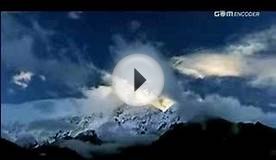Weather changes, global warming
 Dr. Kevin Trenberth. Photograph: National Center for Atmospheric Research
Dr. Kevin Trenberth. Photograph: National Center for Atmospheric Research
The scientists list the following questions as a guide to their study.
1. Given a particular weather pattern, how were the temperatures, precipitation, and associated impacts influenced by climate change?
2. Given a drought, how was the drying enhanced by climate change and how did that influence the moisture deficits and dryness of the soils, leading to a more intense and long-lasting drought?
3. Given a flood, where did the moisture come from? Was it increased by warmer ocean waters?
4. Given a heat wave, how was that influenced by drought, changes in precipitation, and extra heat from global warming?
5. Given extreme snow, where did the moisture come from? Was it related to oceans that are warmer?
6. Given an extreme storm, how was it influenced by sea temperatures, ocean heat content, unusual moisture transports?
7. Was a storm surge worse because of higher sea levels?
In other words, the authors take for granted that an event has occurred and they ask, how did climate change affect its impact?
The authors use a few well-known cases studies. “Snowmaggedon, ” which occurred in Washington DC in 2010; superstorm Sandy; supertyphoon Haiyan; and the flooding in Boulder, Colorado. They found that for Snowmaggedon and Sandy, unusually warm waters made those events worse. In addition, for Sandy, the human-caused sea level rise added to the storm surge. They report,
It is possible that subways and tunnels may not have been flooded without the warming-induced increases in sea level and storm intensity and size. Putting the potential price tag of human climate change on this storm in the tens of billions of dollars.
For supertyphoon Haiyan which ravaged the Philippines in November 2013, the increased sea temperatures and ocean heating along its path increased its strength and this made the impacts worse. For the Colorado floods, the authors found that ocean temperatures off the coast of Mexico were very high. This was where much of the water entered the atmosphere before subsequently falling in Colorado. According to the authors,
the extremely high sea surface temperatures and record water vapor amounts that accompanied the event … probably would not have occurred without climate change.
Later, the authors make reference to the 2010 Russian heat wave and the current drought in California. This new study reconciles past conflicting studies where very little evidence of a climate link was found of general circulation changes, but evidence is clear in the thermodynamics.

